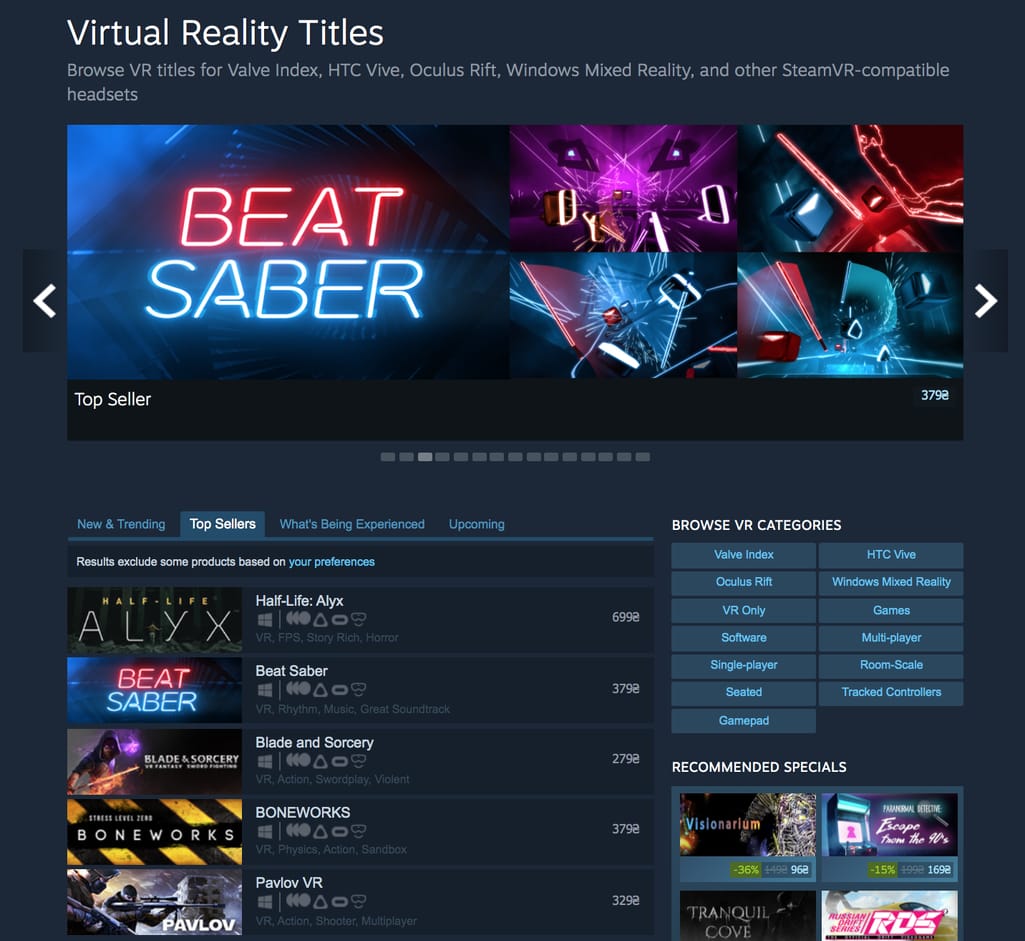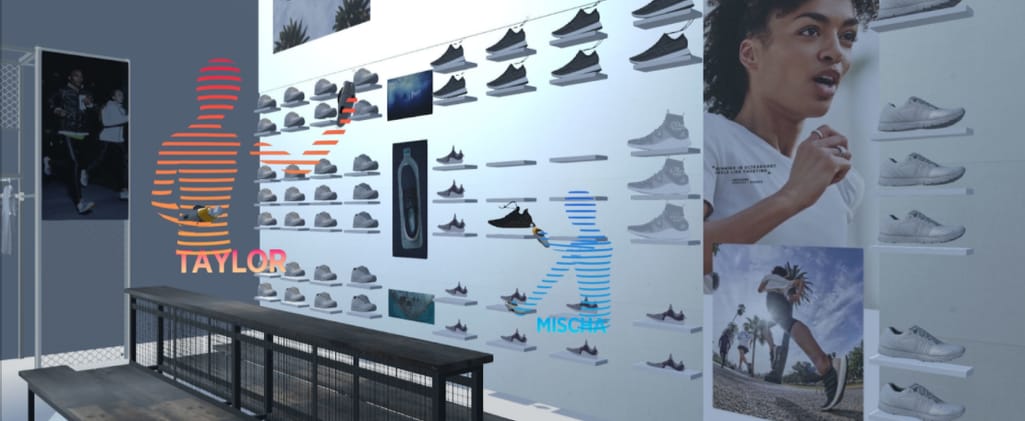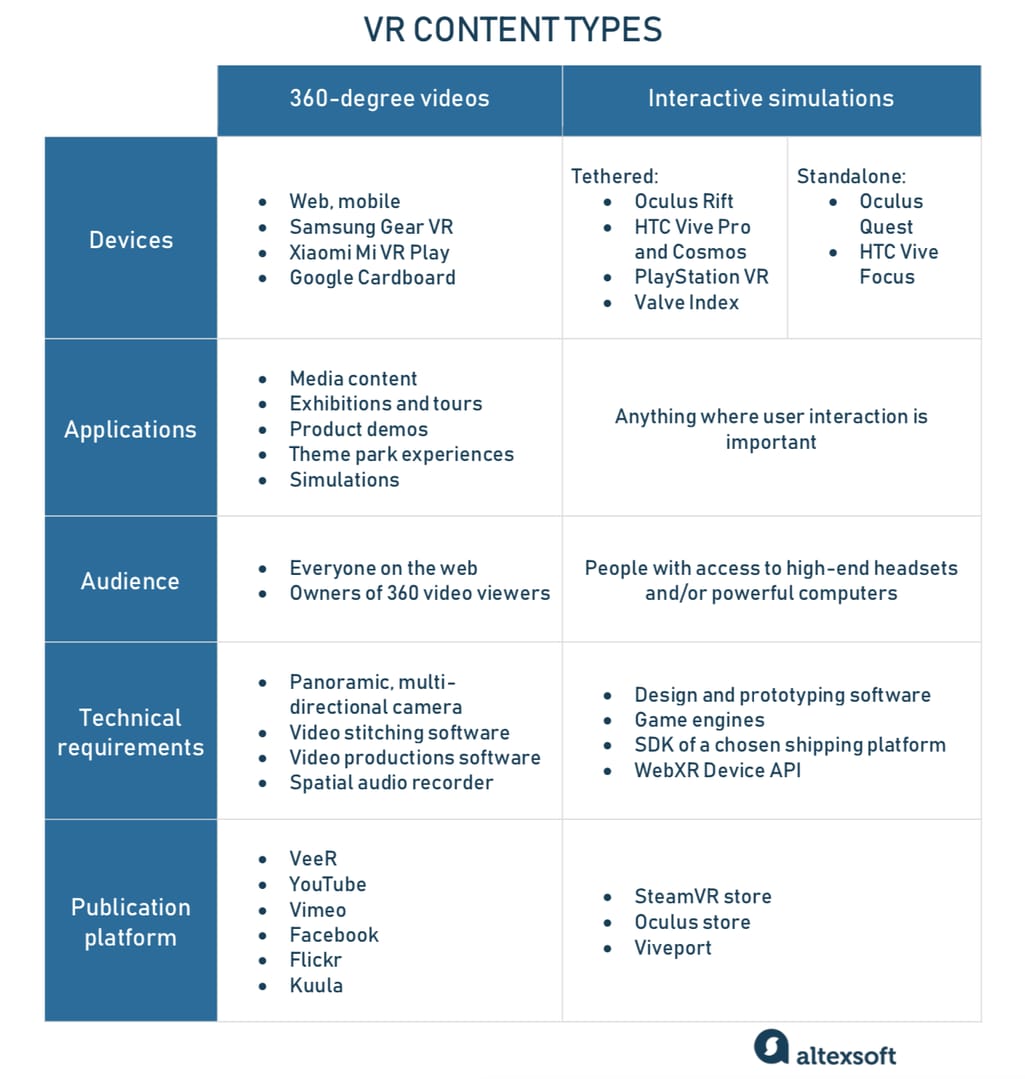“Mrs. G was super-religious and spent most of her time in the OASIS, sitting in the congregation of one of those big online mega-churches, singing hymns, listening to sermons, and taking virtual tours of the Holy Land.”
Ready Player One by Ernest Cline
This sentence, describing the seemingly absurd circumstances of using virtual reality goggles in 2045 is already outdated. Meditative readings of the Bible are available on Samsung Gear VR today. For free. Sit back and enjoy.
It seems like anything can be transferred into a virtual realm. Just scroll through a VR experience store. You can swim with dolphins, act out your dreams of being a pirate, immerse yourself and your kids in an educational VR about the night sky. And then there are a ton of games: racing, shooting, arcades, exploration, and… oh, is this The Economist VR app? There also seems to be a Jaguar racing simulator, a virtual tour of GE’s smart windfarms in China, and an overview of the Western Sydney University campus.
Not many of those hundreds of branded experiences available on VR platforms are as interactive and realistic as you may expect. But they’re out there, open to the public, collecting users and reviews, while benefiting their developers. If you want to know how to build a VR application for your customers, employees, or simply for the good of the humankind, keep reading. Let’s start with the most reasonable examples of VR implementation.
Virtual reality applications
The last time virtual reality appeared in Gartner's Hype Cycle was in 2017. It was expected that in a span of five years, VR would reach the Plateau of Productivity – the place where technologies go to bask in the glow of mainstream adoption. Since then, VR has disappeared from Gartner’s radar, meaning that it has become mature enough to no longer be considered emerging tech. Is that the way it is now? Let’s examine a few use cases where VR truly succeeds. Of course, with real-life examples.
Gaming
Most people’s introduction to virtual reality has been via video games. Despite the wince-inducing price tag (popular headsets are priced from $299 to $999) , VR gaming remains the most accessible way for consumers to experience the technology. The demand is high and the proposition doesn’t lag behind. Steam, the largest PC gaming marketplace, reports a 32 percent year-over-year growth of VR game sales. According to its monthly report, almost 2 percent of Steam’s customers own a VR headset, which makes up around 2.4 million active monthly users of the service. In 2020, which was a lucrative year for gaming in general, 1.7 million people joined the SteamVR platform and the general playtime increased by a whopping 30 percent year over year.
There are a little under 5000 titles in the SteamVR store
Spending hundreds of dollars on VR products and required hardware is not the only option for people who want to try immersive gaming. Standalone VR amusement parks, free-roam multiplayer VR attractions, and VR rides in shopping malls are open for people seeking short-time thrills for a fraction of the real-time price.
Marketing
Customer experience simulations, product demos, fun experiments with a nebulous relation to the company are the most common examples of using VR in advertising. These are mostly one-time campaigns aimed at creating a buzz around the brand, getting customers excited, and letting them try a product in a somewhat gamified manner. A common way to do that is by filming a 360 tour of the product or service. British train operator Lumo created a film introducing their new trains and giving stakeholders and passengers an idea of what it’s like to travel with them. Creating such content is easy and profitable.
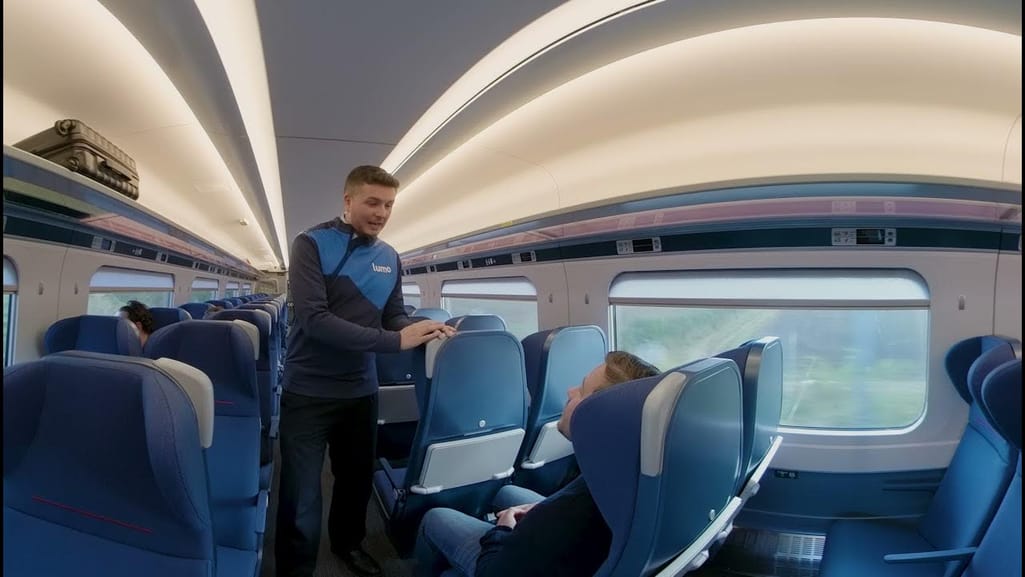

This immersive take on traditional adverts was shot with 360 cameras
An example of a different approach is offered by the Emirates’ very own VR app. Here, users step into entirely animated 3D spaces of the Boeing 777 and A380, allowing them to freely explore economy, first, and business classes, the cockpit, and interact with different objects.
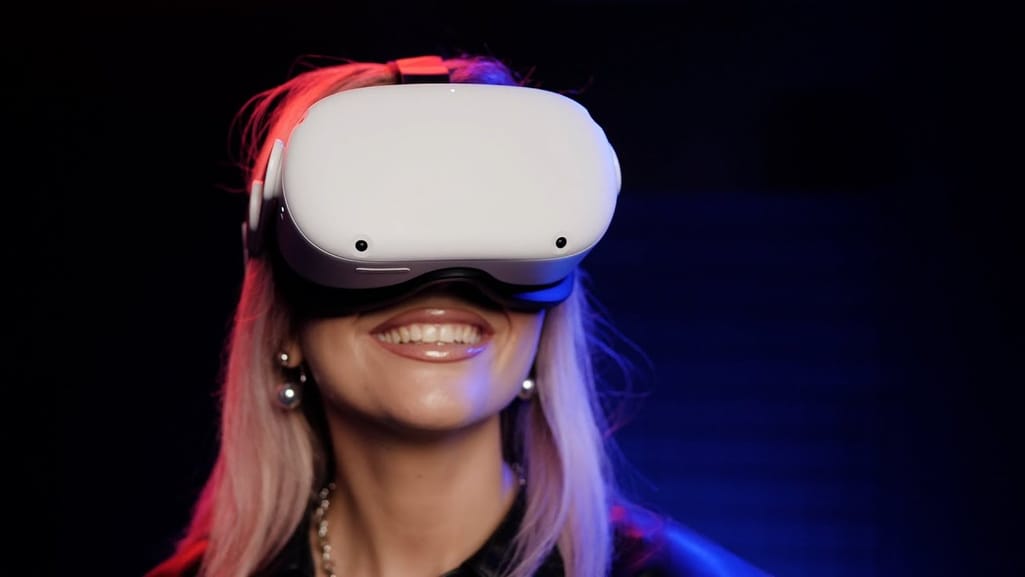

The Emirates VR Experience can be downloaded for free on the Oculus Store
Training and education
NASA started using VR simulators for astronaut training in the 1990s and haven’t stopped since. Today, the agency uses four types of virtual training including spacewalks, rescue situations, repair and robotic operations, and of course zero-g-mass adaptation. Boeing is also working on a training VR simulation for their Starliner spacecraft currently in development. Pilots would be able to practice docking and different emergency situations with realistic visuals.
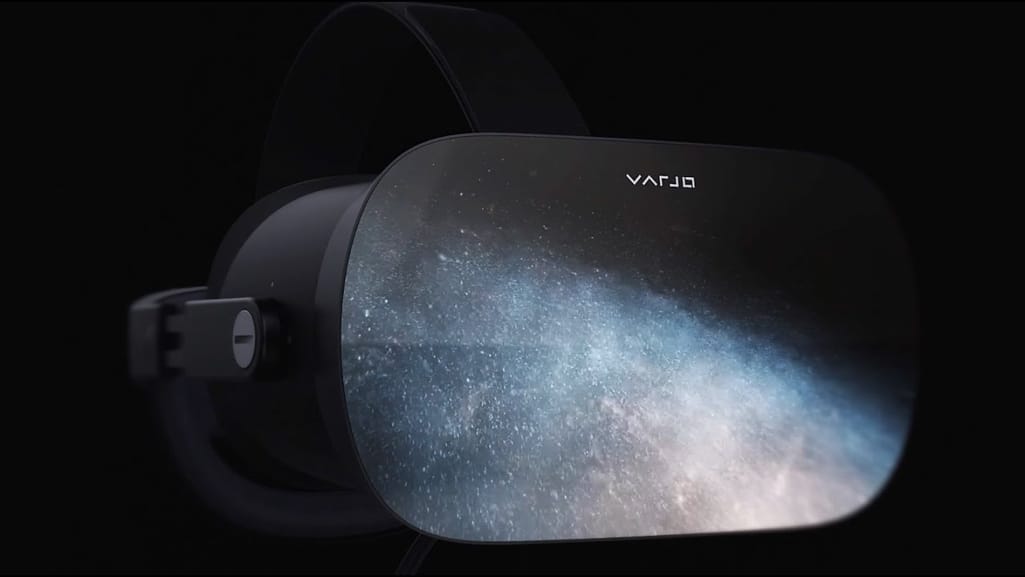

The collaboration with VR technology provider Varjo allows Boeing to achieve great visual quality
Many dangerous and simply high-risk operations on Earth also employ virtual reality as part of their practice. Military, firefighter, railway maintenance, and many more simulators are used to prepare trainees to make quick decisions in stressful situations, and all without harming or endangering people as it used to be with traditional training. Even the U.S. Fire Administration advocates for the use of VR equipment and apps to eliminate the hazards prevalent in live training. Flaim Systems is one of providers of such technology that uses real-life equipment, jackets with built-in heating elements to simulate fire, and a hose that gives realistic feedback. This is both very different and extremely similar to those gaming sims people can enjoy on their PCs.
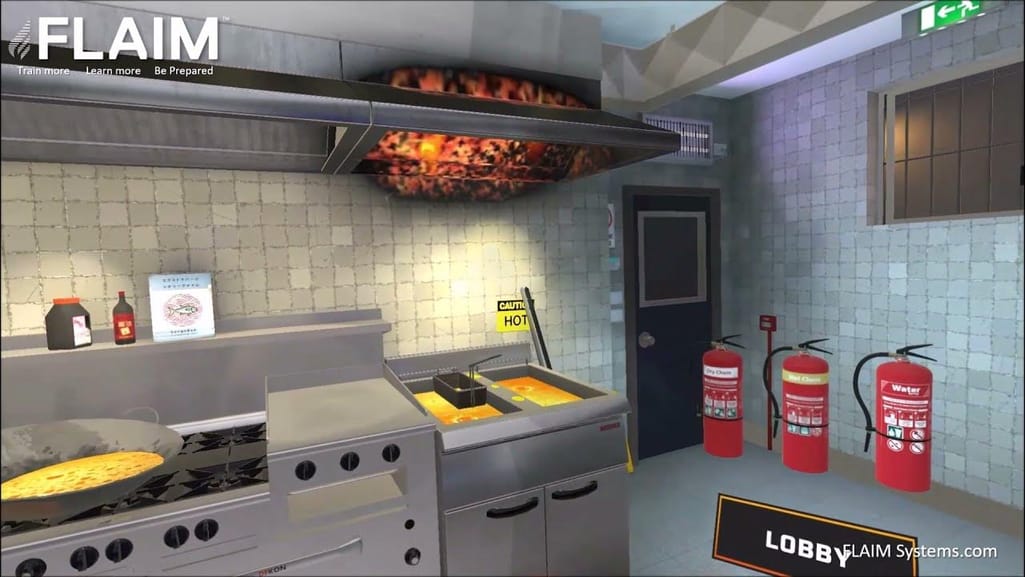

Flaim products have been used by the Australian Navy, US Air Force, the Paraná Fire Department in Brazil, and more
Avoiding dangerous situations is not the only reason to use VR though. Bank of America recently launched a VR training program in nearly 4,300 of its financial centers to help employees practice difficult conversations with clients and improve their listening skills. Similarly, Walmart uses Oculus devices in each of its Walmart Academy classes, allowing associates to experience live store situations, such as the chaos of Black Friday.
Regular school education benefits from VR as well. ClassVR, a platform designed specifically for schools, provides kits consisting of headsets, software, and educational materials for teachers to implement in class. Lenovo VR Classroom offers similar hardware and software solutions. There are also virtual social spaces like Mozilla Hubs or AltspaceVR, allowing teachers to build VR classrooms and teach remotely in a more engaging environment.
Healthcare
Use cases for VR application in the healthcare domain are extremely broad: from education that can increase patient engagement and medicine adherence to physician training and surgery simulations. Yet some of the most interesting examples are about helping people deal with mental and physical pain.
For example, VR exposure therapy (VRET) is being explored as a way to help people treat PTSD, phobias, and anxiety. Veterans participating in studies where they used a headset to dive into the traumatic environment experienced reduced symptom severity after several appointments.
Another successful example is using VR therapy for pain management, which may become a safer alternative to opioids. In 2021, FDA authorized the marketing of EaseVRx, a headset for patients experiencing chronic lower back pain that has programs for relaxation and pain distraction. Alleviation of burn wound pain, pain during daily dressing changes, and pain of labor is one of the most highly discussed topics in the medical VR field.
Social
Virtual places to hang out with friends or collaborate with remote teammates have been popular even before Mark Zuckerberg announced his venturing into Metaverse. For example, The Wild platform allows designers and architects to visualize and share concepts, thus completely transforming prototyping and presentation processes.
Adidas used VR to create and interact with retail experiences before it’s been built
Source: The Wild
Breakroom, Cluster, and already mentioned AltspaceVR and Mozilla Hubs allow anyone to create a virtual room for socializing, collaboration, and events. And with Meta finally releasing Horizon Worlds to the public, anyone with an Oculus Quest 2 device (currently, the most popular headset) can create their own social environments.
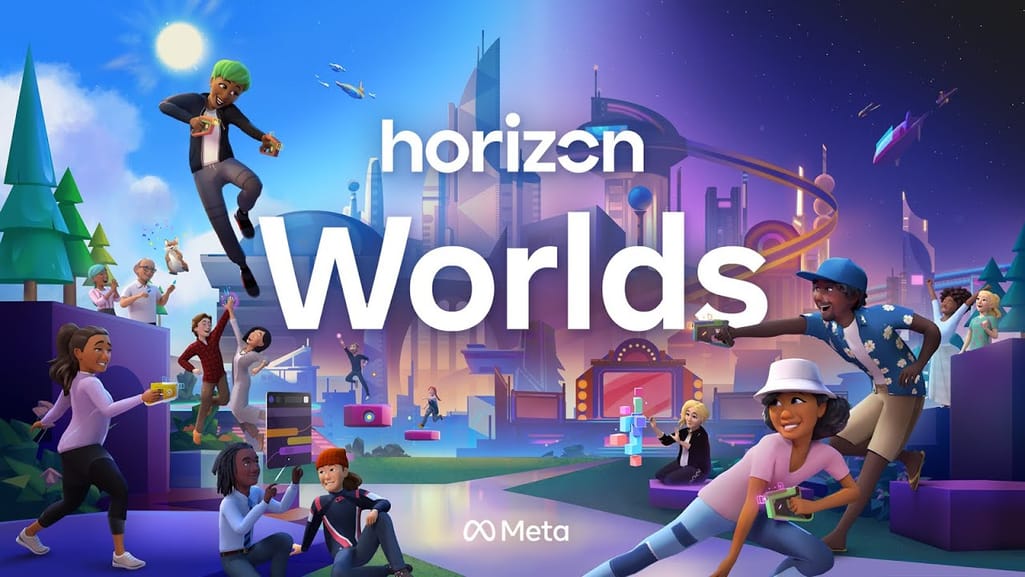

Metaverse just became real
Types of VR: 360 videos vs interactive simulations
By virtual reality or VR, we understand the technology that can place people inside a simulated world for more immersive and interactive experiences that could be achieved via a flat screen. So, VR entails the use of a headset.
There are two types of VR content you can create: 360 videos and high-end, fully immersive experiences.
Comparing the development of VR content types
360-degree videos
These are typically short experiences filmed with specialized 360 cameras or modeled with 3D assets. Viewed rather than interacted with, they can still be very valuable when you want to showcase a product or service and put a person inside a different environment.
Headsets. VR videos can be viewed on Samsung Gear VR, Xiaomi Mi VR Play, and Google Cardboard.
Applications:
- Media content such as short films
- Exhibitions and tours
- Product demos
- Theme park experiences
- Simulations of particular situations for training and therapy
Audience. Since 360 videos can also be watched on desktop and mobile, without a headset, they can potentially reach a much wider audience. Such headsets themselves are more accessible – a user simply needs to put their smartphone inside their handheld viewer and they’re good to go.
Technical requirements for development.
- Panoramic, multi-directional camera
- Video stitching software (typically provided by camera manufacturers)
- Video productions software such as Adobe Premiere or Final Cut
- Spatial audio recorder (optional)
Publication platform. 360 videos can be shared on VeeR (a specialized VR distribution platform), YouTube, Vimeo, Facebook, Flickr, and Kuula, among others.
Interactive simulations
These are entirely different experiences usually reserved for video games or whenever you want people to interact with objects and explore the environment. Here, a person is usually allowed to move, operate the controllers, perform various actions, and enjoy spatial audio, i.e., being fully immersed. Such simulations are more difficult and expensive to develop but allow for exploring endless creative ideas unconstricted by the processing power of a smartphone.
Headsets. There are two types of devices that can deliver such simulations: tethered headsets, which must be connected to powerful computers (Oculus Rift S, HTC Vive Pro and Cosmos, PlayStation VR, Valve Index) and standalone devices with built-in processes (Oculus Quest, HTC Vive Focus).
Applications. Here, you can create basically anything you could do with 360-degree videos, but this time, with interactive elements.
Audience. There are two ways to reach your audience. First is, of course, targeting people who already own a device. But if you’re working on something that will be experienced directly on location (for example, for employee training or a short marketing campaign), you can provide users with high-end devices without worrying if they have one at home.
Technical requirements for development. High-end VR content must be developed with more technical skill and experience. Core VR development tools include:
- Design and prototyping software
- Game engines
- SDK (software development kit) of a chosen shipping platform
- WebXR Device API (for posting VR content on the web)
Publication platform. The main destination for most VR experiences is the Steam shop, which hosts content for HTC Vive, Oculus, Valve Index, Windows Mixed Reality, and more. Most devices have their own dedicated shipping platforms as well.
We hope that you found this overview helpful. If you’re thinking that interactive high-end simulations are the right choice for you, keep reading as we will cover in detail the technicalities of developing such experiences.
Understanding VR development
VR application development is no longer an uncharted area. Today we have tools, approaches, and techniques that help us get started from a lower entrance point. Here we will describe the main phases of creating a VR project along with the tools and skills you will require.
Some of the hardware and software you will need to develop high-end VR applications
Design, prototype, and 3D modeling tools
Similar to most software engineering projects, VR development usually starts with design. We say usually because sometimes, for prototyping or educational purposes, this step is skipped and coders use assets from community-run libraries. You also can download ready-made objects, backgrounds, or textures – they save a ton of time and can often improve your project without any additional effort. However, for custom experiences, 3D modeling is a must-have. So, what will you need?
Pen and paper. Although the 360-degree world is different from traditional rectangular screen dimensions, you still need to prototype and create 2D wireframes for the UI part of your project. Some experienced designers even created printable templates that can be converted into virtual sketches: Check out this 360 panorama grid and a VR storyboard template.
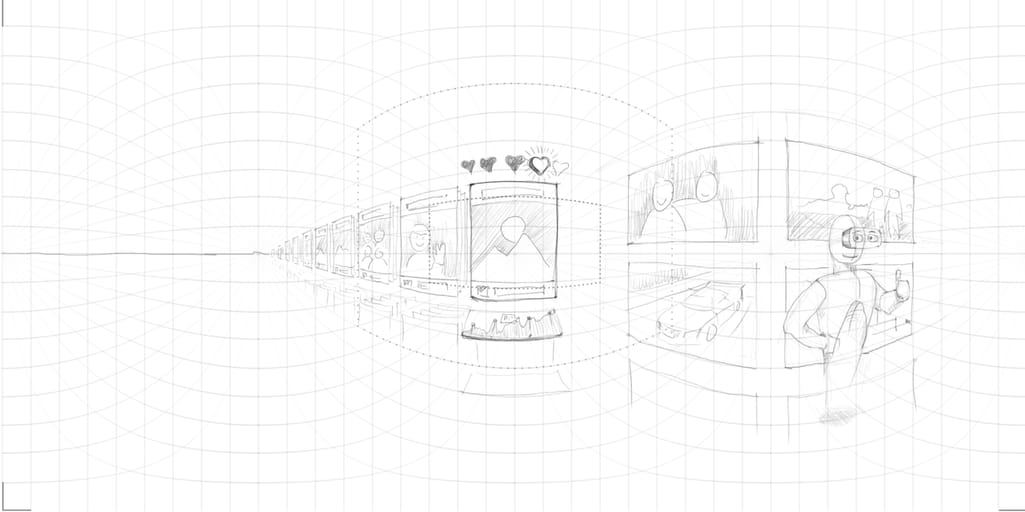 Example of a sketch for virtual reality
Example of a sketch for virtual reality
Source: Volodymyr Kurbatov
Blender. This free and beginner-friendly product will help you create great custom 3D models for your first VR project. Any visual designer from your team can get the hang of it with online tutorials and a bit of practice. Blender objects can be easily imported into any game engine.
3ds Max and Maya. These Autodesk products are standards in modeling, sculpting, animation, lighting, and visual effects. Many if not most game and movie elements are designed using one of them. Which is both a blessing and a curse since their robust nature makes them challenging to learn. They are not exactly cheap and require a true master to put them to work effectively. Consider them when you have time and money to spare.
Cinema 4D. Another advanced tool, Cinema 4D, while not as widely used, has a ton of plug-ins and a milder learning curve when compared to Maya, for example. It’s popular among small teams and single artists, and unlike Autodesk products is available for Mac OS.
WebXR API
WebXR Device API provides capabilities for rendering 3D scenes to present them in the virtual world or for augmented reality directly on the web. Simply put, this is a JavaScript API that allows us to experience VR in most modern browsers. Even most phones today can access WebVR content by switching to the landscape mode – the screen will split into a dual display to be used in any headset supporting smartphone conjunction. Of course, this is not a fulfilling virtual experience (yet) but it gives developers creative freedom and allows brands to incorporate VR elements directly on their website.


WebXR is the most accessible way to create and publish simple VR experiences
Game engines
To develop interactive virtual reality experiences, your absolute must-have is a game engine. Game and VR engines are programs specifically aimed at creating rich, immersive, and realistic worlds that require programming and graphic design skills. Most popular VR engines today are free (at least to a certain point), easily integrated with VR platform-specific SDKs and allow for heavy customization with APIs.
While mobile development suggests that you use a different tech stack for every operating system (unless you’re using one of the cross-platform methods), most VR engines allow you to publish your app on all main platforms. While there are tons of engines on the market to explore, we’ll give you a quick overview of the main ones.
Unity. Considered the mandatory tool for beginning VR engineers, Unity supports all main VR devices and file formats used by different 3D building applications including Cinema4D, 3D Max, Maya, and more. It uses C# – object-oriented scripting language – to write commands for game objects and the overall logic of your virtual world. One of Unity’s biggest pros is the huge community-based asset store for free and paid 3D objects, textures, and audio files. The product is also free until you start earning over $100k a year from your app. Finally, the community is unmatched with over 50 percent of games across mobile, PC, and console being made with Unity.
Unity interface
Source: youtube.com/avrworks
Unreal Engine. Second in line after Unity is Unreal Engine. This tool uses C++ language which is considered more difficult than C# or Java and requires some C++ programming knowledge before getting started. There’s also an alternative scripting method called Blueprints Visual Scripting which allows designers and programmers to work in collaboration using the same range of tools.
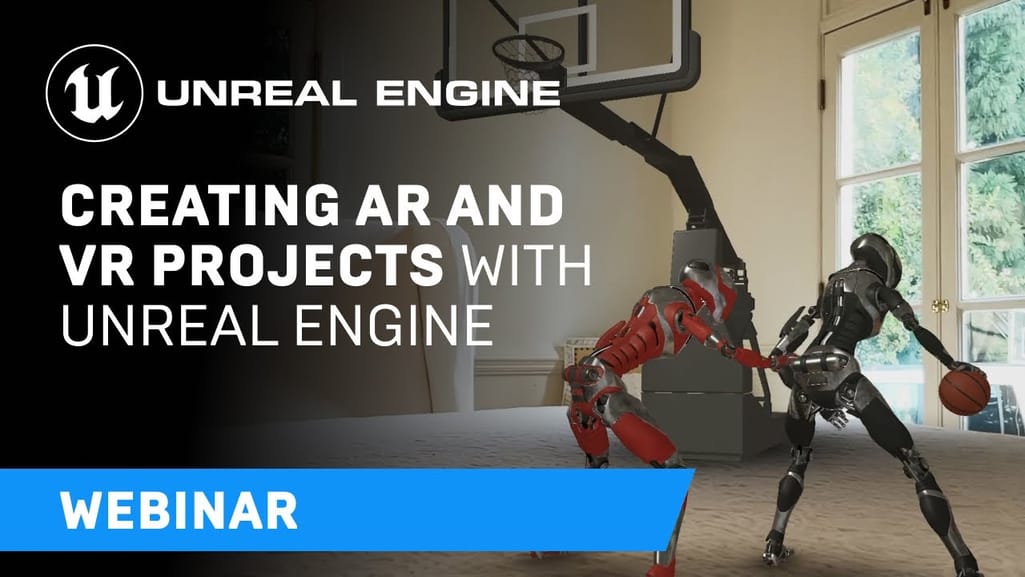

Unreal’s webinar into VR development
Unreal uses a different pricing model – the engine is free to use until you earn your first $1 million, then you have to pay 5 percent royalty. It’s a more complex and sophisticated tool compared to Unity, which is compromised by better performance and arguably the most realistic look among other engines. Just like Unity, it supports all main VR devices.
CryEngine. Another free tool for highly realistic-looking interfaces is CryEngine. It’s famous for its unique weather and water effects including volumetric fog, ocean physics, and full 3D cloud rendering making it a first-choice tool for nature-rich experiences (check out this gameplay of VR game Robinson: The Journey for a demonstration). CryEngine also works with C++ and unlike its competitors supports only three VR platforms: HTC Vive, Oculus Rift, and OSVR.
Platforms and SDKs
Of course, with cross-platform engines such as Unity and Unreal, you can tap into any market, but any development requires you to pick the starter SDK to shape your experience around. SDK is a plug-in that you add to your chosen engine. It includes engine- and platform-specific assets, content, and techniques that shape the overall native experience for each device. Among many community-provided APIs and tools, you probably should start with each brand’s official SDK.
Let’s review SDKs from five VR providers.
Viveport SDK. Devices from the HTC Vive line appeared from the collaboration of a hardware company HTC and Valve, a creator of the largest software distribution platform Steam. According to Steam, over 12 percent of their users experience VR via an HTC devices. The apps are distributed via – you guessed it – the Steam VR platform and available on PC.
Oculus SDK. As Vive’s biggest competitor in VR experiences for PC, Oculus started the global VR adoption with its Kickstarter campaign in 2014. Apart from the Steam platform, you can distribute applications in the Oculus store. Today, the company sells one headset – Oculus Quest 2 – yet its previous devices are still in use. Namely, on Steam alone, almost 40 percent of VR is viewed via their main headset with its no-longer-produced model as Oculus Rift S remains in third place with around 15 percent.
OpenVR SDK. Not an SDK for any specific type of platform, OpenVR is an API for accessing any attached headset, be it Oculus, Vive, Index, or Mixed Reality. Provided by Valve, it basically communicates with SteamVR and any device supported there. While this may be a handy option, since you don’t have to rely on any specific SDK, it doesn’t have detailed documentation, so it might be not the simplest solution. But if you’re planning to reach Valve Index’s vast audience of almost 16 percent VR users on Steam, this is your only option.
Windows SDK. There’s no separate SDK for Windows Mixed Reality development, so you would be using Visual Studio with Windows SDK. WMR headsets include devices both for AR and VR, and its VR products are Samsung HMD Odyssey+, HP Reverb, Acer OJO, and more. Overall, they comprise 5.69 percent of SteamVR userbase.
PSVR Dev kit. The most elusive of all, a development kit for PlayStation VR is provided per formal request. With a new PlayStation VR 2 headset coming out soon, it makes sense to get your hands on the updated dev kit as soon as possible. Contact Sony directly if you’re interested.
What slows VR adoption
Virtual reality examples are impressive but scarce. Why so? We have a few reasons for you.
Financial and technical demand. Today, VR users are no longer considered early adopters. Yet, it remains the prerogative of those who can afford the hardware. If a user decides to build a computer considering Oculus or HTC minimum requirements, this will likely cost them a few thousand dollars. And that’s only the consumer side. Developers also need to have high-powered hardware to manage 3D modeling and VR engineering tasks. The lack of implementation also leads to the public viewing VR more like a toy than a practical investment.
Physical discomfort. Many VR sets today are heavy, restricting, and still don’t meet our expectations of highly immersive and convenient goggles. For the best VR experiences, users often dedicate separate rooms or spaces where these limitations are less visible. Before VR devices become mobile and compact and can be easily accessed anywhere, the adoption will keep staggering along.
Health issues. PlayStation and Oculus don’t recommend using headsets for children under age 13. Pregnant and elderly people, those suffering from heart or psychiatric conditions should consult a doctor before trying the VR experience. People are also at risk of having seizures, dizziness, headaches, eye strain, or even blackouts during virtual reality gaming. It’s important to point out that most of these issues are also applicable to regular gaming and even watching TV. The cases of severe problems are, however, rare and preventable. The biggest problem with engaging people in VR experiences is taking this responsibility and preparing for possible dangers.
Yet, many of those concerns can soon be alleviated. Modern headsets are becoming more affordable and compact. The market’s leader Oculus Quest 2 costs $299, compared to its predecessor’s $399 at its release. The device also doesn’t require extra computer equipment to run and can be used virtually anywhere. And as technology improves (and it will with the upcoming release of next-gen PSVR 2, Apple’s AR/VR headset, and Meta’s very own Project Cambria, which will also be a standalone device), we can expect that other issues will also be solved.
Is it worth it? Main takeaway
For many brands, VR creation might not be the most challenging part. Some will get stuck at the phase where you need to persuade your stakeholders that the effort will pay dividends. This means that a VR experience of your design must strike a specific chord with the audience or solve problems that otherwise wouldn’t be possible to solve. If you have the right solution that can bring significant benefits both to you and your customers only with the help of VR, it’s worth the try.

Learn more about the complex politics of hotel-OTA relationships in this video
Want to write an article for our blog? Read our requirements and guidelines to become a contributor.


